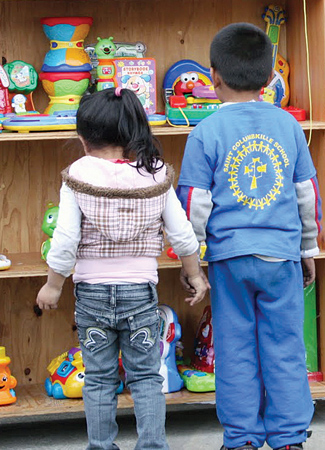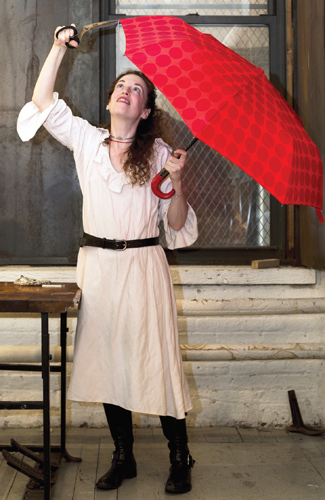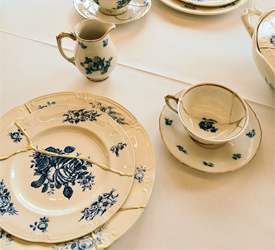Too Much Stuff? 7 Ways To Change That
1. Change the rules
University procurement policies are one of the most effective pressure points for students seeking big change. The college apparel industry, which retailed an estimated $4.6 billion in 2011, is mostly supplied through overseas factory labor for brands like Nike and Adidas.
When one Adidas factory supplier in Indonesia abruptly closed in April 2011, 2,700 workers were left without jobs and were owed $1.8 million in severance pay. United Students Against Sweatshops (USAS) responded by launching a two-year campaign aimed at pressuring university administrators to end their contracts with Adidas if the company refused to pay the workers. Seventeen universities and colleges ended their contracts. In April 2013, USAS announced that the campaign had been successful: Adidas had agreed to compensate the former workers.
2. Know your stuff
Last year, nearly $1 billion worth of handmade goods was sold through Etsy, the flourishing online marketplace that connects individual craftspeople with individual buyers. Madesmith is an online store that takes this idea one step further, telling the stories of the people who make the wares it sells. Like the one about Chelsea Miller, whose work creating handmade knives from repurposed steel helps her forge a connection with her blacksmith father.
Madesmith founders Sheila Iverson and Sumeera Rasul aim to support local communities and preserve craftsmanship. They hope that the stories behind the products will help buyers think a bit more about the things they buy, how they’re made, and who is making them. "Knowing where our things come from,” they write, helps us “buy less, buy well."
3. Share it

At the height of the Great Depression, the manager of a Los Angeles dime store caught two small boys pocketing toys their families couldn’t afford. The Probation Department staff assigned to the boys' case responded by opening the county's first Toy Loan Center in a garage in Southwest L.A.
In recent years, the Toy Loan Program's popularity has grown quickly alongside unemployment, with the number of centers in Los Angeles County more than doubling over the past decade.
The program still operates like it did more than 75 years ago, though. Each week, children at 45 centers throughout the county check out their favorite toy on an honor system. For every 20 weeks of good toy care and on-time returns, children earn a wish-list toy to keep. If a kid gets bored with a toy, it goes back on the shelf for the next borrower. It's a library for toys, without the late fees.
4. Repair it
A growing movement is fighting planned obsolescence by helping people fix what's broken.
In Brooklyn, N.Y., the Fixers Collective dedicates space, tools, and community support to what it calls improvisational fixing. Formed out of a 2008 art installation based on the idea of mending, the collective has since built a community that includes experienced fixers with skills in mending, soldering, and electronics.
People bring suitcases, clocks, and iPods—anything, really—to the monthly repair sessions. Sometimes things aren't fixable and get creatively repurposed. A specialty of the Fixers is creating tote bags from broken umbrellas reclaimed from the streets of New York.
5. Slow clothes

Sarah Kate Beaumont makes virtually everything she wears, underwear and rain gear included. The New York-based artist uses fabric from worn out clothes and old sheets, other people's scrap fabric, and the occasional discount cloth purchase to craft a beautiful, functional, and completely hand-made wardrobe in her own style.
Beaumont began her project in response to the economic downtown in 2008, and five years later, it's grown into a lifestyle.
Slow clothes, as Beaumont calls the project, is about understanding the clothes we wear. Because she mends or makes everything she wears, she's not supporting sweatshops and other aspects of consumer culture. At the monthly mending workshops she hosts, participants tell her again and again how encouraging it is when they find they can prolong the life of something they thought was worn out. Darning a sock, she says, is empowering.
"If I am cold in the winter and need another layer, I make it, instead of thinking about what I need to buy," says Beaumont, who is featured in the book Overdressed: The Shockingly High Cost of Cheap Fashion by Elizabeth Cline. Beaumont adds that shifting her focus away from consumerism opens up artistic space in her life. Her handmade lifestyle demands creativity every day and builds self-reliance.
6. Think "better than new"

When ceramic artist Dick Lehman traveled to Japan for an exhibition in 1999, he was astonished by his host's parting gift: four broken ceramic cups that Lehman had thrown in the trash just a few weeks earlier. Under his host’s covert care, the cups were recovered, repaired with silver, and made even more beautiful than they were before.
Kintsugi, translated as "gold joinery," is the ancient Japanese craft of mending broken pottery with gold-filled resin. Modern Kintsugi artists use a variety of materials to decorate the scars from a repair.
"In the West, we usually expect a thing to be repaired so you can't tell it's broken," says Lehman, who now incorporates Kintsugi into his own work. Using copper powder or gold leaf to mend his pieces, Lehman hopes his repairs communicate a sense of history and care. He writes, "Kintsugi artists believe when something has suffered damage and has a history, it becomes more beautiful."
Shannan Stoll wrote this article for The Human Cost of Stuff, the Fall 2013 issue of YES! Magazine, a national, nonprofit media organization that fuses powerful ideas with practical actions. This article is shared here with permission.
